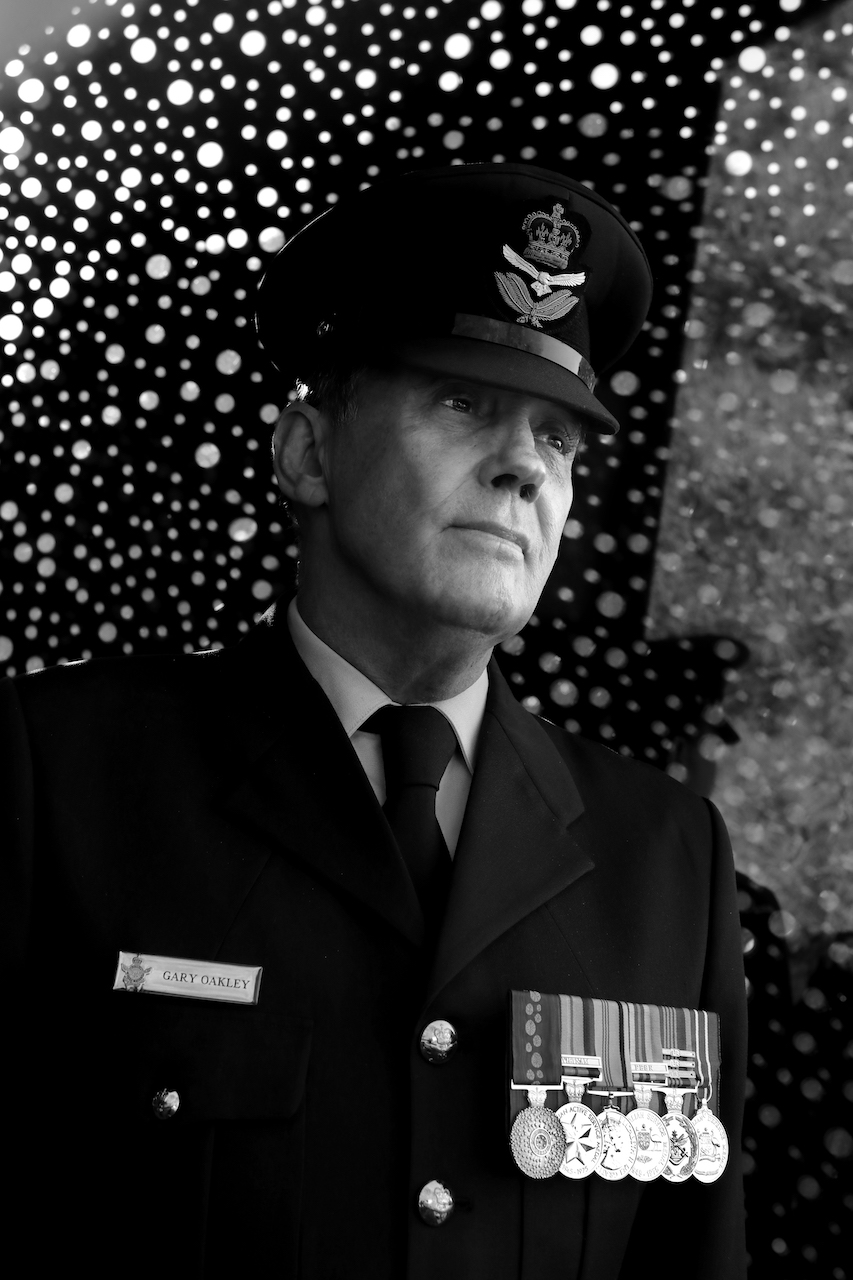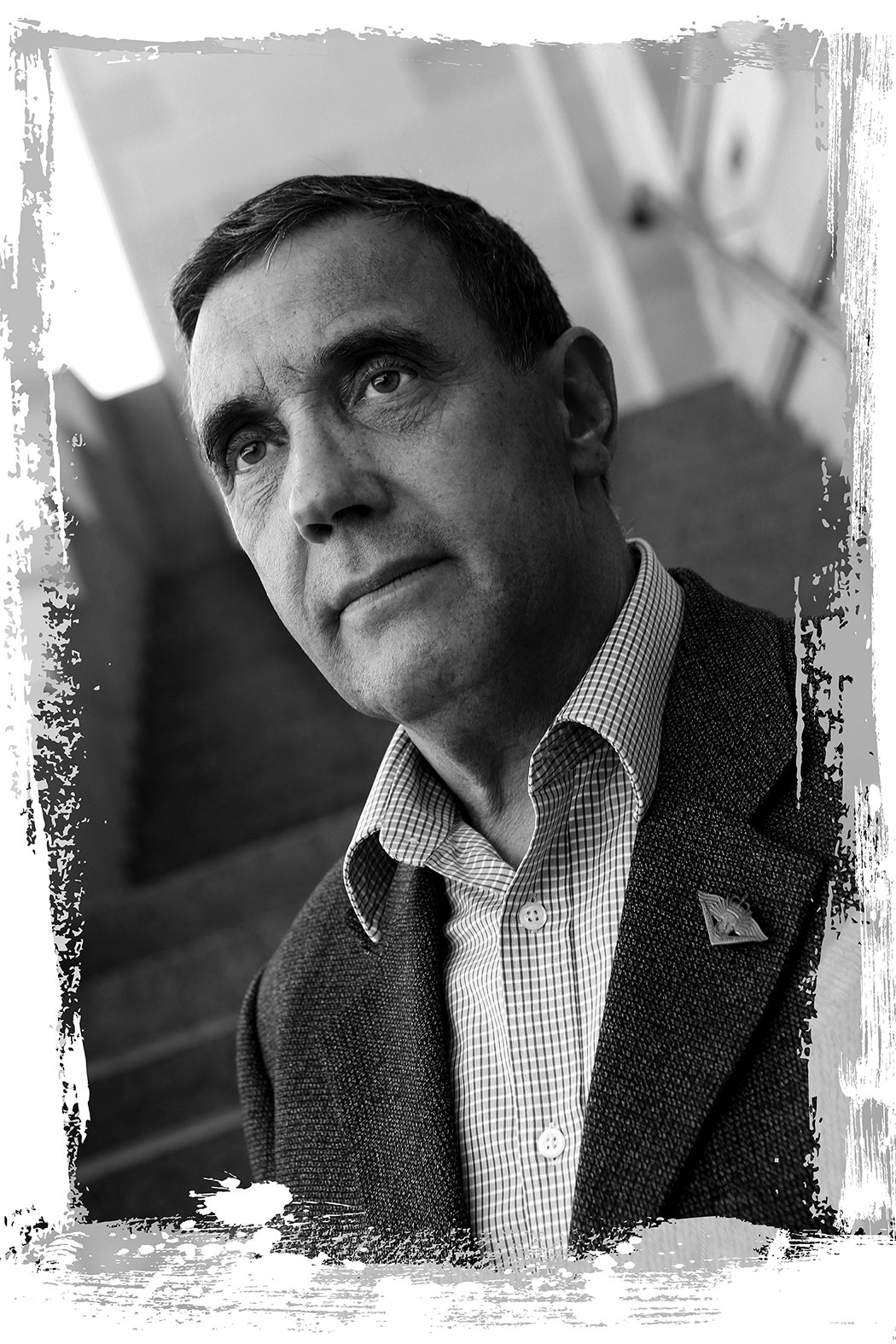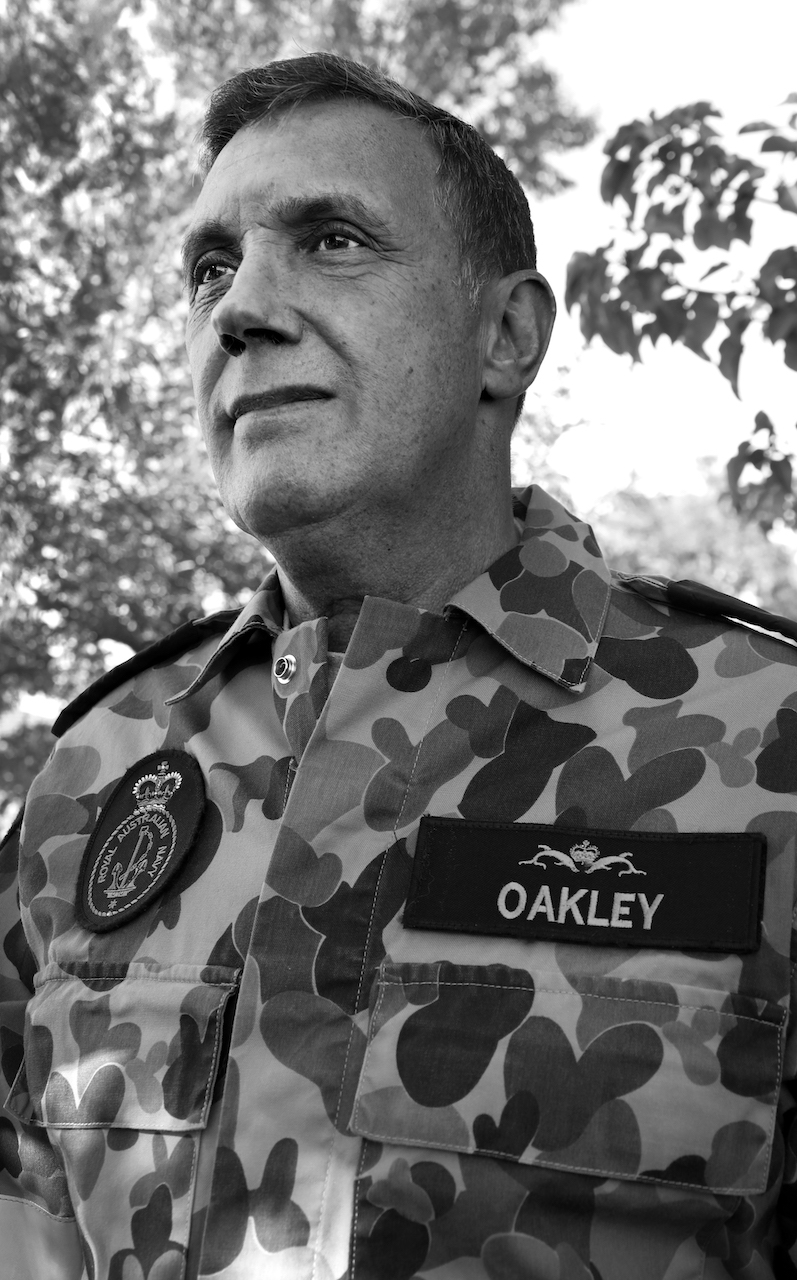Gary Oakley OAM
Gundungurra Man
Squadron Leader
Royal Australian Air Force
Indigenous Liaison Officer Australian War Memorial
Medals and Awards
Medal of the Order of Australia 2019
Australian Active Service Medal 1945-75 with clasp Vietnam
Vietnam Logistic and Support Medal
Australian Service Medal 1945-75 with clasp
Defence Force Service Medal with clasp
Australian Defence Medal
Returned from Active Service Badge
RAN Submariners Qualification Badge
I am a Gundungurra man, born and raised on country in Katoomba New South Wales during the 1950s. My life-long connection to the Australian Defence Force began during my first year of high school at Katoomba High when I got a taste of Military life when became a member of the school Cadet Corps. But my parents moved to Canowindra and being an Indigenous kid, in the middle of Central New South Wales, there no jobs or opportunities for me, so I said to myself, “How do I get out of here?” So, on the 12 of July 1969, at the age of 15, I decided to joined the Royal Australian Navy as a Junior Recruit. I trained for 12 months at HMAS Leeuwin in Fremantle Western Australia and I was in the 28th intake at Leeuwin, which consisted of two divisions, Collins and Walton. At the end of your service at Leeuwin, they basically asked you to give three choices and my first choice was a baker, then underwater control and last a clearance diver. They said “Oh, we’ve just got rid of bakers “. So they said, “You’re going to be an electrician, and if you fail electrical course you’re going to be a clearance diver”. Vietnam’s on and I wasn’t particularly interested in crawling through a swamp while the locals were shooting at me. So I thought, “Okay, I’ll become an electrician “. So I became an electrician and my first ship was HMAS Duchess, a ship that the RAN received second hand from the Royal Navy to replace the loss of HMAS Voyager.
My second sea draft was HMAS Sydney, an old Majestic Class aircraft carrier that had seen service during the Korea War, but this time it was travelling between Vung Tau and Australia with troops and equipment. I was just 17 years old, stationed on guard holding a rifle without a magazine in it. So, if you saw something, you weren’t supposed to open fire, you were supposed to call the bridge on the phone.
What I remember are the smells. The smell of the jungle, of decaying vegetation, the smell of avgas and sweat.
But, most of all, I remember the smell of fear on the new guys getting ready to get on the Chinooks and fly up to Nui Dat and start their tours.
I remember the guys who we’d be taking home – they’d get off the helicopters – and the way they walked and talked and looked at each other. There was a love for each other, even if they didn’t like each other.
But back home, if they had their uniform on they were abused, spat on and called baby killers. They joined the military, or they were conscripted to do a job that the government said they had to do, so why did they do this? There’s a saying, “When they need you, they love soldiers; when they don’t need you, you’re the enemy.’”
I noticed the change when they had the Welcome Home Parade in 1987. I marched in that, in the Navy section, and people came out and shook your hand and said, ‘I’m so sorry it wasn’t your fault.’ And I thought, well, it took you a long time and there’s a lot of people that you’re never going to be able to say sorry to because they have already suicided. But it was a good thing that people came out and admitted that they were wrong.”
During my time on surface ships I served on HMAS Perth, HMAS Stewart, and HMAS Stalwart. On Perth I was involved in the half-life refit in Long Beach, California in the USA where we were stationed for just over twelve months. On my return to Australia I was posted to HMAS Platypus the submarine base and it was during this time I decided that I liked the Submarine branch and while serving on Stalwart I volunteered for submarines. My strong interest in submarines led me to set up and become the curator of the 1st Australian Submarine Squadron Museum, this was my first taste of museum work and I liked it. I started my submarine training at HMS Dolphin, Gosport in the United Kingdom, with my first submarine posting was HMAS Oxley and my last HMAS Ovens.
In my career in the RAN, I had postings to the depots HMAS Kuttabul, HMAS Lonsdale, HMAS Nirimba and HMAS Harman. In 1991, after twenty-one and a half years I left the RAN, while working in the Record of Training and Employment Office at Russell in the Australian Capital Territory, I took up a part-time curatorial opportunity in Heraldry and Technology at the Australian War Memorial (AWM) and during this time I studied Cultural Heritage Management and Museum Studies part- time at the University of Canberra. On completion of my studies, I was transferred to the then new Gallery Development Section to be the Galleries Curator during the first of the major refurbishments for many years of the “2nd World War Gallery”. My position was made permanent and in my role came to curate all the major new galleries of the AWM of the time including, “2nd World War Gallery”, “Airpower in the Pacific 1941 to 1953”, “Conflicts 1945 to Today”, “Striking by Night”, and “The Discovery Zone” with the exception for “Over the Front” of which I had some curatorial input. In April 2009 I was appointed the first Indigenous Liaison Officer for the Memorial and instrumental in producing the first Reconcilliation Action Plan (RAP) at the AWM, at this time I pushed for more Indigenous recognition throughout the AWM displays. During my time at the AWM I have travelled overseas visiting the battlefields of France, Belgium, Turkey, Germany, Singapore and Malaysia as well as the United States Civil War, worked as a curator in the Bavarian Army Museum in Ingolstadt, Germany. I have been back to Ingolstadt many times and have build strong relationships both professionally and personally. In 2017, I was fortunate to be made a Fellow of the Australian War Memorial November in recognition of my contribution and in 2019, I was humbled to receive an Order of Australia Medal for my contribution to Indigenous communities. Whilst at the AWM I was elected as the National President of the Aboriginal and Torres Strait Islander Veterans and Service Association of Australia (ATSIVSA) and proudly held the position for over 30 years.
Even though I loved my time at the AWM, I realised I really missed the military life – so I blended my two passions by joining the Navy Reserve to work closely with the Navy History section. Here, I documented and researched naval history also assisting Indigenous Affairs–ADF with their Indigenous Pre-Recruitment courses as well as travelling to community to speak to Indigenous youth in relation to career opportunities in the Defence Force. I transferred from the Navy Reserve December 2014 to the Air Force as a Squadron Leader within Air Forces Indigenous Affairs AFHQ as the Air Force Indigenous Historical Custodian and spent a year as the Air Force Senior Indigenous Liaison Office managing the ILO on bases throughout Australia. After 6 years in the branch I transferred to Air Force History and Heritage as the First Nations Curator/Historian and Liaison Officer. In this role I produced cultural material for the Defence Chaplaincy Manual and Air Forces Customs and Traditions Handbook and have been invited to speak as a subject matter expert by Parliamentary Members Library to members of government on Indigenous military history. As a subject matter expert invited to lecture the Royal Australian Navy on Indigenous history in the RAN, Duntroon Army staff, Staff College, ADFA students and staff, students and staff OTS Sale and staff 1RTU on Indigenous military history. Given many other talks to schools, and associations in the ACT and interstate on Indigenous military history and culture. One of the most recent contribution was a vision I held for many years, being able to co-write and research a book honouring the lives of Australia’s First Nations Aviators.
I have been a member of the Defence DRAP team and I currently sit on Indigenous Cultural Advisory Group (ICAG). Past positions on committees and boards include ACT Veterans & Families committee as the Indigenous advisor, Co-Chair AWM Indigenous Reference Committee for the new AWM expansion, Indigenous historian for City of Sydney Reference Committee for the Indigenous Memorial Hyde Park, Indigenous historian for the Office of the Black Rod, NSW Parliament Centenary of ANZAC committee, Committee member on the board for the Indigenous “For Our Country” art installation/memorial on the AWM grounds, Indigenous member and advisor, ACT Canberra Museums and Galleries (CMAG) Reference Committee and Manager of the Men’s Secret and Sacred collection held by the National Museum of Australia. Memories which touch my heart are when I started the Indigenous ANZAC Day Ceremony and service on Mount Ainslie which has now been running over 30 years, organising and leading the Indigenous March Anzac Day 2017 at the National Ceremony Canberra, ACT. I have had an amazing journey, participated in ABC television’s series Who Do You Think You Are with Catherine Freeman and Christin Arnu, worked with archaeologist turned TV presenter Neil Oliver on a three-piece documentary on the Australian War Memorial, collaborated with Shrine of Remembrance Chief executive Dean Lee on Indigenous Memorials and lectured and gave advice to Russel Crowe the cast of the movie The Water Diviner.
I have dedicated my career to honouring and remembering First Nations Peoples and their service in uniform and in an auxiliary capacity in war, warlike operation and peace time and in 2017 I was fortunate to be made a Fellow of the Australian War Memorial and in 2019 I was humbled to receive an Order of Australia Medal for my contribution to Indigenous communities and being on various boards.


